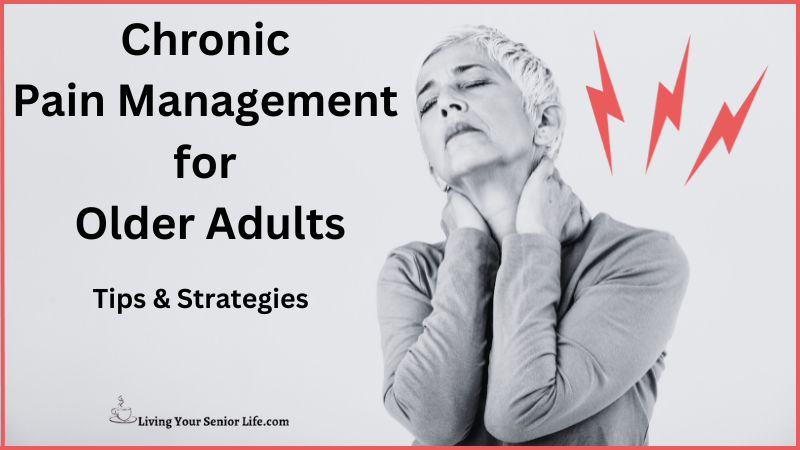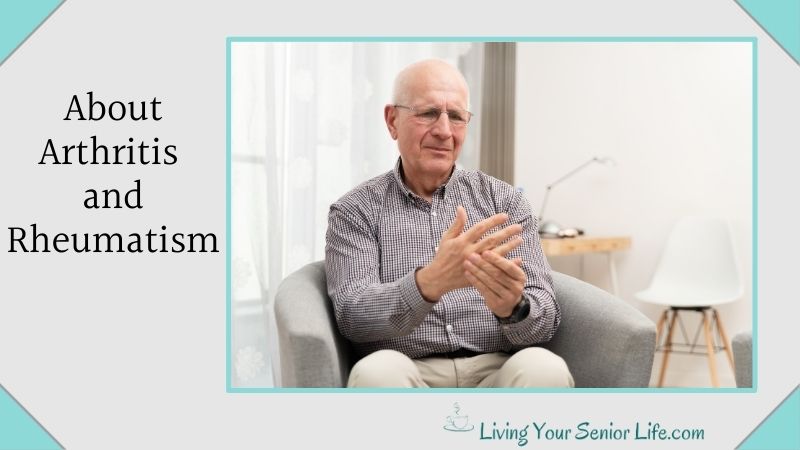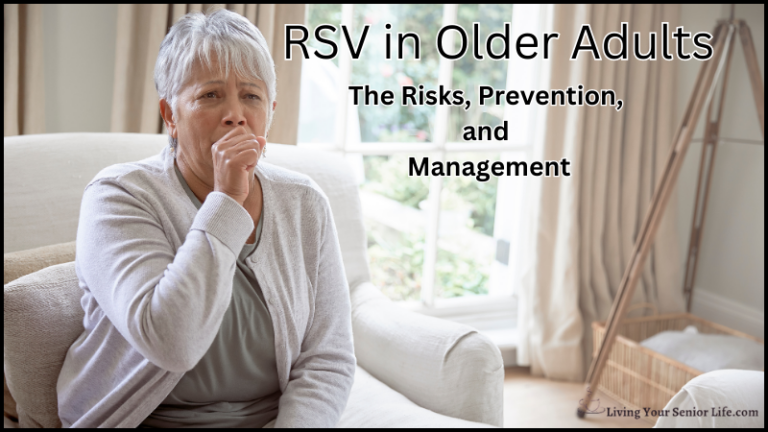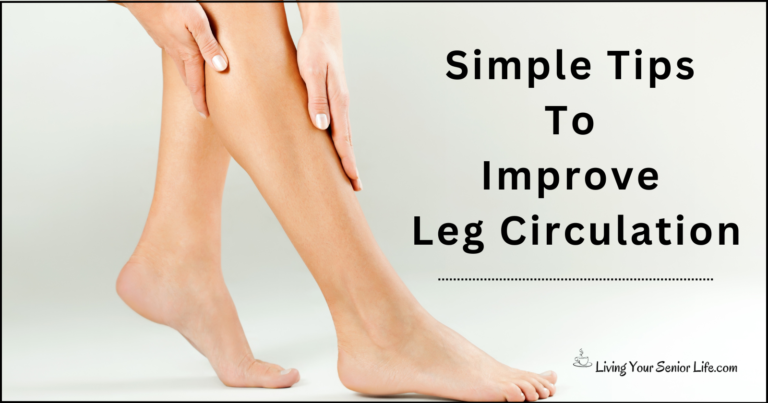Living with chronic pain can significantly impact your quality of life, especially if you are an older adult. Whether you are experiencing arthritis, neuropathy, or another condition, chronic pain management can be challenging. However, there are strategies and tips that can help improve your overall well-being and manage your pain.
In this article, we will explore a range of options for senior pain management. From lifestyle changes to alternative therapies and medications, we will discuss the importance of working with healthcare professionals to develop a personalized pain management plan. Additionally, we will look at how caregivers can support seniors in managing chronic pain. Whether you are an older adult living with chronic pain, a caregiver looking for ways to help, or someone interested in understanding chronic pain management better, this article is for you.
Understanding Chronic Pain
Chronic pain is a prevalent and complex issue that affects many older adults. It is important to have a comprehensive understanding of chronic pain in this population to effectively address and manage their pain.
Chronic pain is defined as persistent pain that lasts for an extended period, typically more than three months. Unlike acute pain, which is temporary and often associated with an injury or illness, chronic pain can be an ongoing condition with various underlying causes.
Key Takeaways:
Chronic pain is a complex condition that affects millions of people worldwide. It is defined as pain that persists for three months or longer and can be caused by a variety of factors, including injuries, illnesses, and medical procedures. Chronic pain can be challenging to manage, but there are several strategies that you can use to help alleviate your symptoms and improve your quality of life.
Here are some key takeaways for managing chronic pain:
- Work with your healthcare provider to develop a treatment plan that is tailored to your specific needs and goals. This may include medications, physical therapy, and other interventions.
- Consider incorporating non-pharmacological interventions into your pain management plan, such as cognitive-behavioral therapy, mindfulness meditation, and biofeedback.
- Practice good self-care habits, such as getting enough sleep, eating a healthy diet, and staying physically active. These habits can help reduce stress and improve your overall well-being.
- Stay connected with your support network, including friends, family, and healthcare providers. Talking about your pain with others can help you feel less isolated and more supported.
- Be patient and persistent in your efforts to manage your pain. It may take time to find the right combination of treatments and self-care strategies that work best for you.
Remember, chronic pain is a complex and challenging condition, but there are many resources available to help you manage your symptoms and improve your quality of life. By working closely with your healthcare provider and adopting healthy habits and coping strategies, you can take control of your pain and live a fulfilling life.
Video: Chronic Pain Management for Older Adults
Understanding Chronic Pain
Chronic pain is a persistent condition that lasts for more than three months. It can be caused by various underlying factors, and unlike acute pain, it does not serve as a warning signal. Chronic pain affects the nervous system and spinal cord, making it a complex issue to manage. Older adults are particularly susceptible to chronic pain, and it is crucial to have a comprehensive understanding of the condition to effectively address and manage their pain.
Diagnosing Chronic Pain
In diagnosing chronic pain in older adults, healthcare professionals typically employ various pain assessment methods to gather information and understand the nature and intensity of the pain experienced. Here are some commonly used pain assessment techniques:
1. Self-Report: Self-report is considered the gold standard for pain assessment in older adults. You will be asked to describe your pain using validated pain scales or rating systems, such as the Numeric Rating Scale (NRS), Visual Analog Scale (VAS), or the Faces Pain Scale. These scales allow you to rate your pain intensity or choose from a range of facial expressions that best represent your pain level.
2. Verbal Descriptor Scales: Verbal descriptor scales ask you to describe your pain using words that convey the intensity and quality of the pain, such as “mild,” “moderate,” or “severe.” This approach can provide a more nuanced understanding of the pain experience beyond a numerical rating.
3. Behavioral Observation: In cases where you have difficulty communicating or are cognitively impaired, healthcare professionals may rely on behavioral observation to assess pain. This involves observing for specific pain-related behaviors, such as facial grimacing, guarding of body parts, restlessness, or changes in activity levels, which may indicate the presence and severity of pain.
4. Pain Diaries or Journals: Pain diaries or journals can be useful in tracking and documenting pain patterns over time. You can record your pain levels, triggers, and the impact of pain on daily activities. This information can provide valuable insights into the nature and impact of chronic pain on your life.
5. Comprehensive Geriatric Assessment: A comprehensive geriatric assessment involves a multidimensional evaluation of various aspects of your health, including physical, cognitive, functional, and psychosocial domains. Pain assessment is an integral part of this evaluation, aiming to understand the impact of pain on different aspects of your well-being and overall functioning.
It is important to identify the type of chronic pain you are experiencing. Acute pain is a normal sensation triggered in the nervous system to alert you to possible injury and the need to take care of yourself. Chronic pain, on the other hand, is pain that persists for longer than 12 weeks and is often associated with a long-standing medical condition or damage to the nervous system. Psychogenic pain, also known as psychological pain, is a type of chronic pain that is caused by emotional or psychological factors.
Using these pain assessment techniques, healthcare professionals can better understand the nature and intensity of your pain, which can help in developing an effective pain management plan tailored to your specific needs.
Common Causes of Chronic Pain

Chronic pain is a common issue among older adults and can result from various factors. Some of the most common causes of chronic pain include arthritis, neuropathy, and back pain. Arthritis, such as osteoarthritis or rheumatoid arthritis, can cause joint inflammation, stiffness, and pain. Neuropathy, a condition characterized by nerve damage, can lead to persistent pain, numbness, and tingling sensations. Back pain, often caused by degenerative changes in the spine, can result in chronic discomfort and limited mobility. Other causes of chronic pain include headaches, cancer pain, surgery, and inflammation.
The Impact of Chronic Pain

Chronic pain can have a significant impact on your physical and emotional well-being. It can lead to decreased mobility, making it challenging to perform everyday activities. Sleep disturbances are another common consequence, as pain can interfere with restful sleep patterns. This can exacerbate other health problems, such as depression, anxiety, and stress, which can further reduce your quality of life. Chronic pain can also result in disability, making it difficult to maintain relationships and work. It is important to address chronic pain to prevent complications such as liver failure and opioid addiction.
Strategies for Managing Chronic Pain
Chronic pain can be a debilitating condition that affects many older adults. However, a multidimensional approach that encompasses both non-pharmacological and pharmacological interventions can provide comprehensive relief of pain and enhance the overall well-being of older adults. Here are some strategies for managing chronic pain:
Non-Medical Pain Management Techniques

Exercise
Regular physical activity is vital for pain management and maintaining overall health. Low-impact activities such as walking, swimming, and tai chi can help improve flexibility, strength, and overall physical function. Exercise can also help reduce stress and improve mental well-being.
Mind-Body Techniques
Mind-body techniques, such as meditation, deep breathing exercises, and yoga, can help relax and reduce pain perception. These practices promote a sense of calm, reduce stress, and improve mental well-being.
Diet and Nutrition
Diet and nutrition can also play a role in managing chronic pain. Consuming foods with anti-inflammatory properties, such as fatty fish, fruits, and vegetables, may alleviate pain. Additionally, staying hydrated is essential for maintaining overall health and optimizing bodily functions.
Medical Pain Management Techniques

Over-The-Counter Medications
Over-the-Counter (OTC) medications, such as nonsteroidal anti-inflammatory drugs (NSAIDs) and topical analgesics, can provide temporary relief from chronic pain. However, caution should be exercised when using OTC drugs, as they can interact with other medications and may have side effects.
Prescription Medications
Prescription medications, including opioids, muscle relaxants, and antidepressants, may be prescribed for severe or persistent pain. It is essential to communicate openly with the healthcare provider about medication effectiveness and any concerns regarding potential risks or side effects. Also, be aware that the risk of adverse drug reactions is slightly higher in older adults.
Alternative Therapies
Alternative therapies, such as acupuncture, massage therapy, and physical therapy, can complement conventional medical treatments. These therapies aim to reduce pain, improve mobility, and promote overall well-being.
- Acupuncture
- Acupuncture is an ancient Chinese practice that involves the insertion of thin needles into specific points on the body to stimulate the flow of energy, known as Qi.
- In the context of chronic pain, acupuncture has shown promising results in providing pain relief, particularly for conditions such as osteoarthritis, back pain, migraines, and fibromyalgia. Acupuncture sessions may help reduce pain intensity, improve physical function, and release endorphins, the body’s natural pain-relieving chemicals.
- Massage Therapy
- Massage therapy involves the manipulation of soft tissues, such as muscles and fascia, to improve circulation, reduce muscle tension, and promote relaxation. It can be beneficial for individuals with chronic pain by targeting specific areas of discomfort and promoting pain relief.
- Massage therapy techniques, such as Swedish massage, deep tissue massage, or trigger point therapy, can help alleviate muscle knots, reduce inflammation, and enhance the overall sense of well-being. Regular massage sessions may contribute to improved pain management, increased range of motion, and enhanced quality of life for individuals with chronic pain.
- Physical Therapy
- Physical therapy can play a crucial role in chronic pain relief. Through targeted exercises, manual therapies, and specialized techniques, a physical therapist can help alleviate pain, improve mobility, and enhance overall function in individuals with chronic pain.
- Physical Therapists employ a variety of techniques, such as stretching, strengthening exercises, and range of motion exercises, to address muscle imbalances, joint stiffness, and weakness that contribute to chronic pain. These exercises aim to improve flexibility, restore proper biomechanics, and reduce pain symptoms.
- Additionally, physical therapists may employ modalities such as heat or cold therapy, ultrasound, electrical stimulation, or therapeutic taping to further manage pain and promote tissue healing. These modalities can help reduce inflammation, relieve pain, and improve the overall healing process.
Note: It’s worth noting that while massage therapy and acupuncture can be valuable adjuncts to chronic pain management, it is essential to consult with healthcare professionals and discuss these treatment options as part of a comprehensive pain management plan.
Working With Healthcare Professionals

Collaborating with healthcare professionals, such as pain specialists and doctors, is crucial in managing chronic pain. Regular check-ups allow healthcare providers to monitor pain levels, adjust treatment plans, and address any concerns or changes in the patient’s condition. A comprehensive pain management plan tailored to the individual’s needs should be created. The treatment plan should aim to ameliorate the burden of pain while preserving the quality of life. Pain clinics can also be a valuable resource for patients seeking specialized care and treatment options.
Caregivers
As a caregiver, you play a crucial role in managing chronic pain for your loved one. Your responsibilities include providing emotional support, assisting with daily activities and exercises, and monitoring medication intake. Close communication between you, healthcare providers, and the individual themselves is essential for effective pain management.
FAQs
How to manage chronic pain is a complex topic that often raises questions and concerns. Here are three frequently asked questions regarding chronic pain management, along with the answers.
Please note that while these answers provide general guidance, it is important to consult with healthcare professionals to receive personalized advice and recommendations based on individual circumstances and medical history.
Are there any specific exercises that seniors can safely engage in to manage chronic pain?

Seniors can safely engage in low-impact exercises to manage chronic pain. Walking, swimming, and tai chi are excellent options that can improve flexibility, strength, and overall physical function without putting excessive strain on the body. It is important to consult with a healthcare professional or a certified fitness instructor to determine the most suitable exercise regimen based on individual capabilities and limitations.
Can alternative therapies like acupuncture or massage therapy effectively alleviate chronic pain in older adults?

Yes, alternative therapies like acupuncture and massage therapy can provide additional relief for chronic pain in older adults. Acupuncture involves the insertion of thin needles into specific points on the body to stimulate energy flow and promote pain relief. Massage therapy can help reduce muscle tension, improve circulation, and alleviate pain. However, it is crucial to consult with a qualified practitioner and inform them about any underlying health conditions or medications to ensure safe and appropriate treatment.
What are the 5 A’s of chronic pain management?

The 5 A’s of chronic pain management include:
Analgesia: Providing pain relief through medication or other therapies
Activity: Encouraging physical activity and exercise
Adaptation: Helping seniors adapt to changes in their physical function and daily activities
Affect: Addressing the emotional impact of chronic pain and providing support
Assessment: Regularly assessing and monitoring pain levels and treatment effectiveness
By following the 5 A’s, healthcare professionals and caregivers can work together to effectively manage chronic pain in older adults.
Additional Reading
Conclusion
Incorporating non-medical techniques, such as exercise, mind-body practices, and a healthy diet, along with appropriate medical interventions and alternative therapies, can help manage chronic pain effectively for older adults. Chronic pain can significantly impact the lives of older adults, but with the right strategies and support, relief can be found.
It is essential to work closely with healthcare professionals, communicate openly, and seek help when needed. A comprehensive pain management plan can improve the feeling of well-being and a higher quality of life despite living with chronic pain.
Acupuncture is a complementary therapy that can help relieve chronic pain. According to the National Center for Complementary and Integrative Health (NCCIH), acupuncture may help with certain types of pain, such as low back pain, neck pain, and osteoarthritis. It is essential to consult with a licensed acupuncturist and discuss any concerns with your healthcare provider before trying acupuncture.
Assessment and measurement of pain are crucial in managing chronic pain for older adults. The Clinics of Geriatric Medicine states that pain assessment tools should be used to evaluate the intensity and quality of pain experienced by older adults. This can help healthcare professionals develop an effective pain management plan.
Remember, managing chronic pain is a journey that requires patience and persistence. With the right strategies and support, it is possible to manage chronic pain effectively and improve your quality of life.
Do you have any tips for dealing with chronic pain management for older adults? Please comment below.
References:
- Mayo Clinic. (2019). Acupuncture. https://www.mayoclinic.org/tests-procedures/acupuncture/about/pac-20392763
- institute of Medicine (US) Committee on Advancing Pain Research, Care, and Education. Relieving Pain in America: A Blueprint for Transforming Prevention, Care, Education, and Research. National Academies Press (US); 2011. Available from: https://www.ncbi.nlm.nih.gov/books/NBK91497/
- National Center for Complementary and Integrative Health (NCCIH). (2020). Acupuncture: In Depth. https://www.nccih.nih.gov/health/acupuncture-in-depth
- Herr, K., & Garand, L. (2001). Assessment and measurement of pain in older adults. The Clinics of Geriatric Medicine, 17(3), 457-478.











